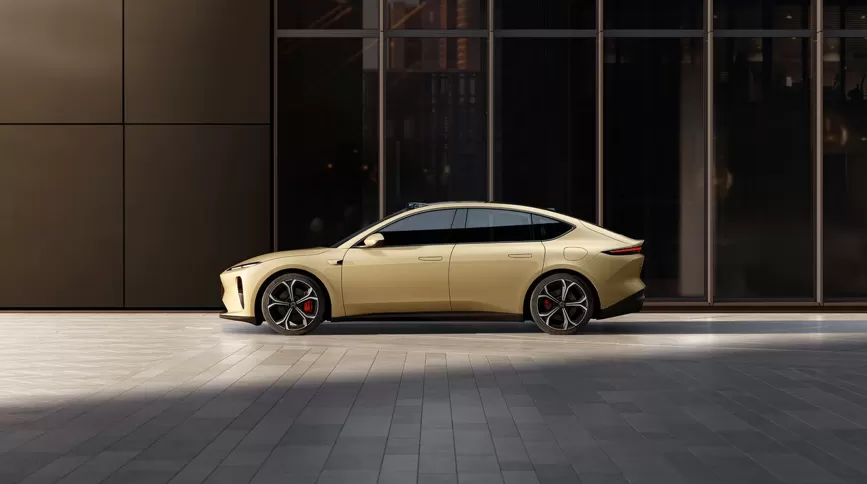Currently, most online reviews focus on the top-tier MAX version of the Xiaomi SU7. priced at 299.900 RMB. The test drives provided by Xiaomi to the media were also of the MAX version. As a result, the performance and details of this version are well-known. However, what about the more affordable standard version priced at 215.900 RMB? We purchased this base model and, after two months, we are ready to share our genuine experience. In this review, we'll discuss the basic handling and charging features. For insights into its smart features post-OTA updates, check our video channel.

Table of Contents
Does the Standard Version Look Inferior to the MAX Version?
We bought the standard Founder’s Edition model, priced at 215.900 RMB, in the popular Bay Blue with a white interior. Visually, it looks nearly identical to the MAX version, except for the 19-inch wheels and rear badge. The Founder’s Edition includes unique "Founders Edition" logos, a unique identification number on the steering wheel, and noticeable carbon fiber mirror covers. Unlike the MAX version, it lacks the four-piston Brembo calipers.
Without air suspension and a spoiler, the number of physical buttons in the center console is reduced from four to two. The ground clearance is about the height of a short soda can, and the front wheel arch clearance is about three and a half fingers, similar to the MAX version set in comfort mode. Although it lacks a spoiler, the rear retains a split decorative panel, likely to be replaced with aftermarket upgrades in the future.
Does the 400V Platform Affect Charging and Range?
The standard and PRO versions of the Xiaomi SU7 have been criticized for using a 400V platform instead of 800V. But how much does this affect daily charging times? We compared our base model with the MAX version using a common commercial fast charger. The MAX version, with its 800V system, achieved a charging efficiency of 149kW under the same conditions, while the 400V standard version reached 113kW. Despite the 30kW difference, the time difference to charge to 80% was minimal, typically within 30 minutes, while charging to 100% takes an additional 20 minutes. For daily use, it's more efficient to charge up to 80%.

From our experience, the charging efficiency difference between the 400V and 800V models isn't significant in everyday use. The time difference in fully charging is about 10 minutes, depending on the charger used. This excludes specialized ultra-fast chargers.
The standard version comes with a 73.6kWh LFP battery, providing a CLTC range of 700 kilometers. In a comprehensive test in Guangzhou (including highways, urban, and congested roads), with the air conditioning on, the car achieved a consistent 12.6kWh/100km consumption, close to the official 12.3kWh/100km figure. In urban low-speed conditions, the consumption even dropped to 11.2kWh/100km, which was quite surprising.
We typically turn off regenerative braking for better efficiency, as braking alone can recover energy. However, after the 1.12 version update, regenerative braking cannot be fully disabled, which is a bit frustrating. Even at the lowest setting, there is noticeable deceleration when the accelerator is released, unlike the previous smooth experience.
Handling Comparison: How Does It Stack Up?
The Xiaomi SU7. even the base model, stands out in handling among electric vehicles in its price range, despite lacking air suspension, four-wheel drive, drift mode, sports+ mode, and Brembo brakes found in the MAX version.
For comparison, we rented a Porsche Taycan, often considered a benchmark for EV handling. The Taycan's low seating position is standard for sports cars, while the SU7's is higher, similar to a regular internal combustion car like the Golf GTI. In the EV category, this seating height is still well-controlled.

The base SU7 has a single motor with 299 horsepower, accelerating from 0-100 km/h in 5.28 seconds, while the MAX version has dual motors with 673 horsepower, achieving 0-100 km/h in 2.78 seconds. Both versions outpace most competitors.
In acceleration, despite the Taycan's two-speed transmission, its 5.4-second 0-100 km/h time is close to the SU7's 5.28 seconds. The SU7's driving feel is surprisingly similar to the Taycan, likely influenced by Xiaomi founder Lei Jun, a Porsche owner.
One area where the SU7 excels is steering precision, comparable to the Alfa Romeo Giulia, with zero play in the steering wheel. In contrast, the Taycan has a 15-degree play, likely for comfort, but SU7's setup is more appealing for handling enthusiasts.
Both cars use a front double-wishbone and rear multi-link suspension. In lateral and longitudinal support, the SU7 and Taycan each have strengths. The Taycan offers more stable lateral support in continuous lane changes, while the SU7's rear end is slightly more prone to minor slides. The MAX version with air suspension offers even better lateral support, but the base version's performance is adequate for daily use, resembling the MAX's comfort mode.
In vertical comfort, especially over speed bumps, the SU7 significantly outperforms the Taycan. The Taycan's stiff suspension shows its limitations over bumps, while the SU7 handles them smoothly, rivaling some SUVs.
Conclusion
The phrase "Xiaomi SU7. young people's first 'Porshaomi'," initially seemed derogatory, but after a thorough comparison, it might be a fitting summary. The SU7 matches the product strength of a Porsche Taycan while incorporating Xiaomi’s unique insights into Chinese driving habits, technology, and details. As Xiaomi’s first car, the SU7 is impressive. Despite some product and price controversies, with over 100.000 orders, its success is undeniable.






